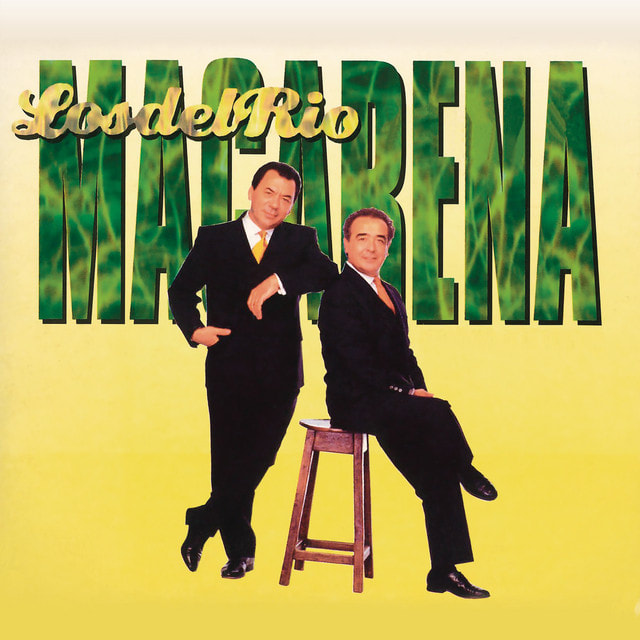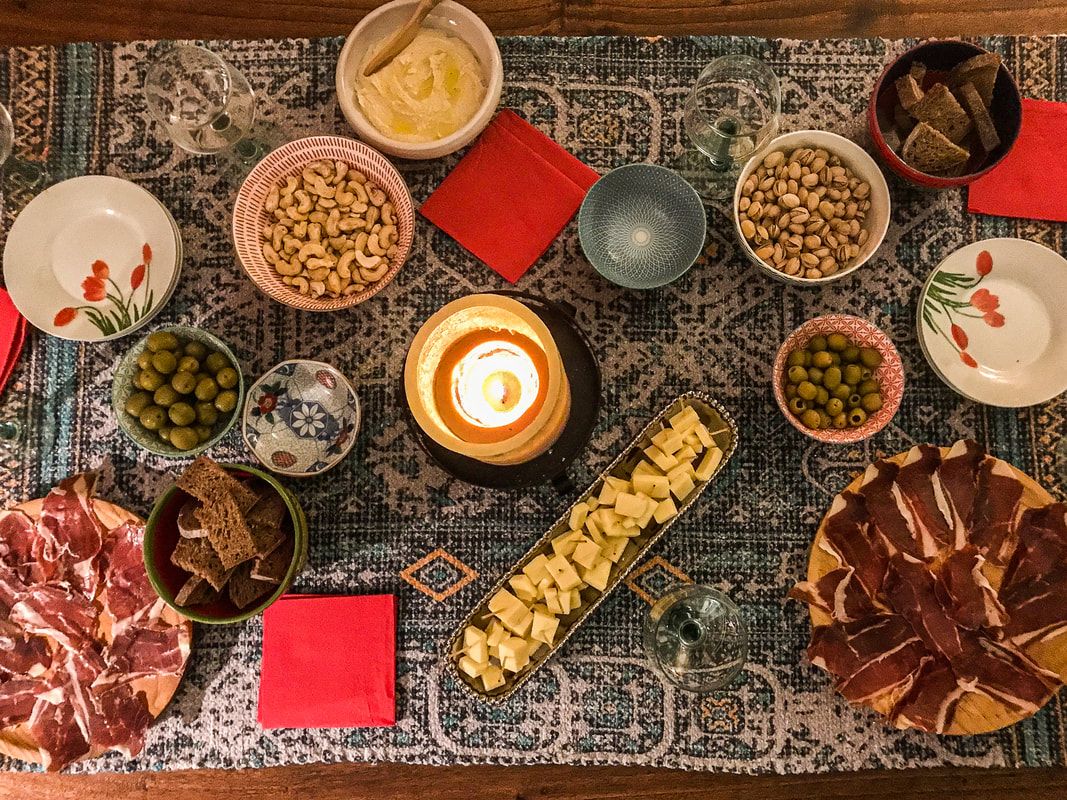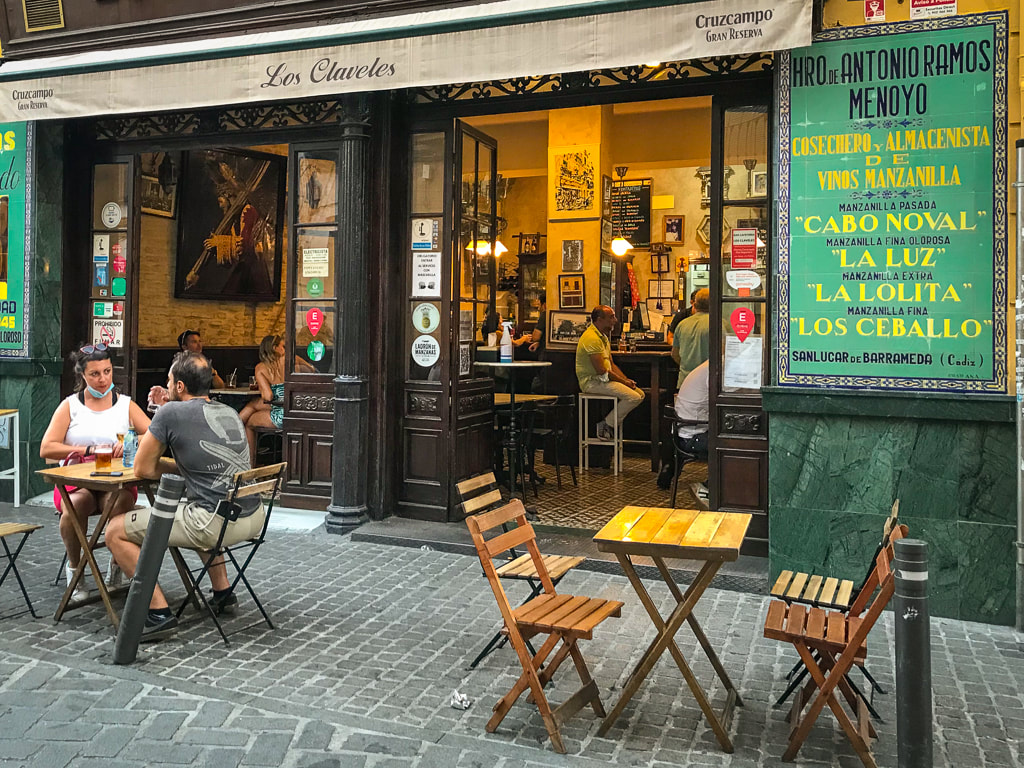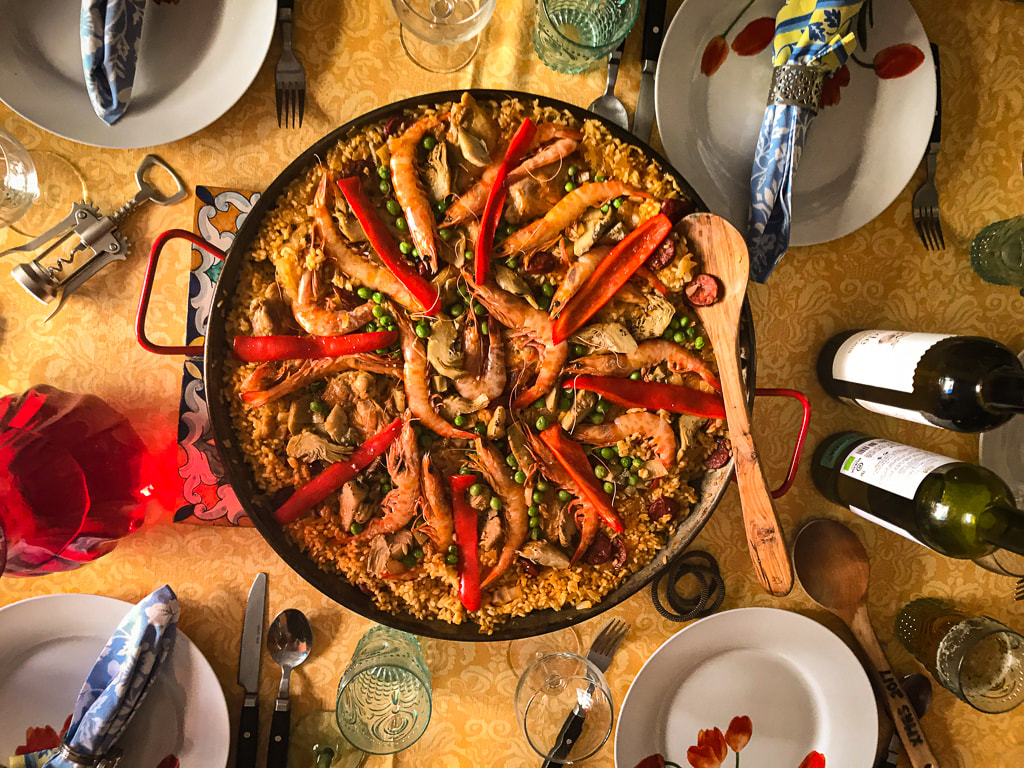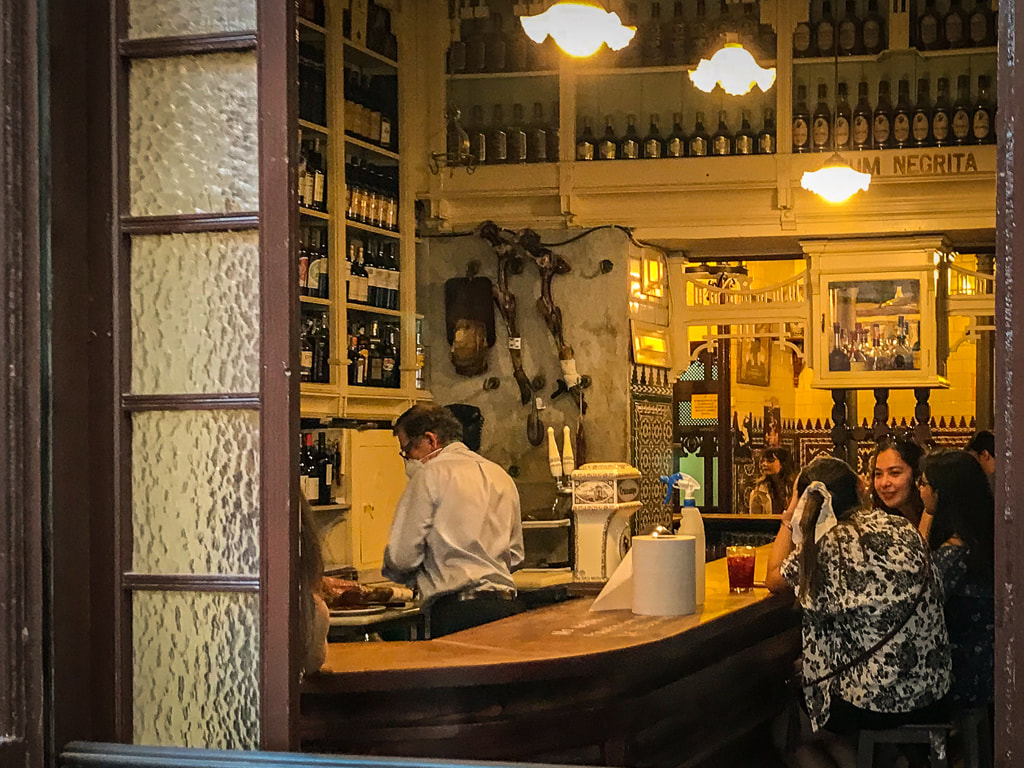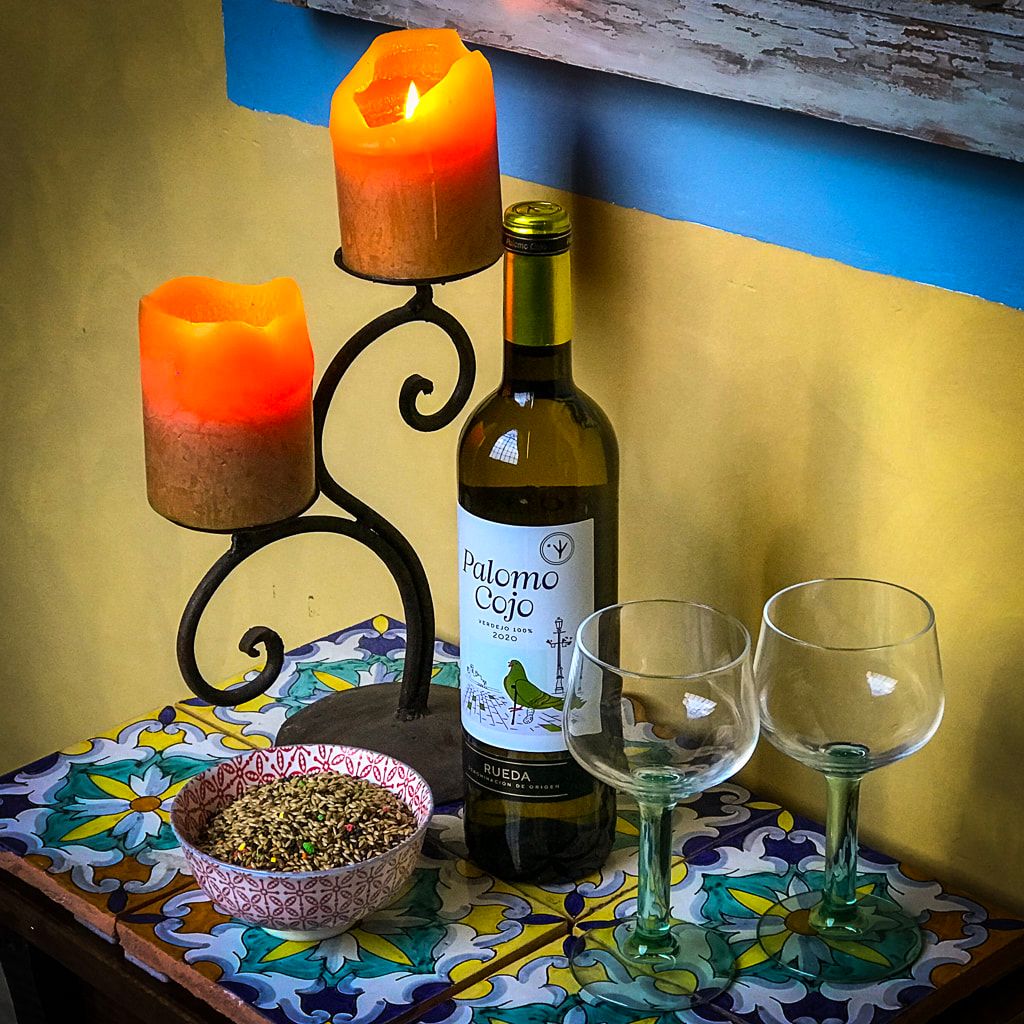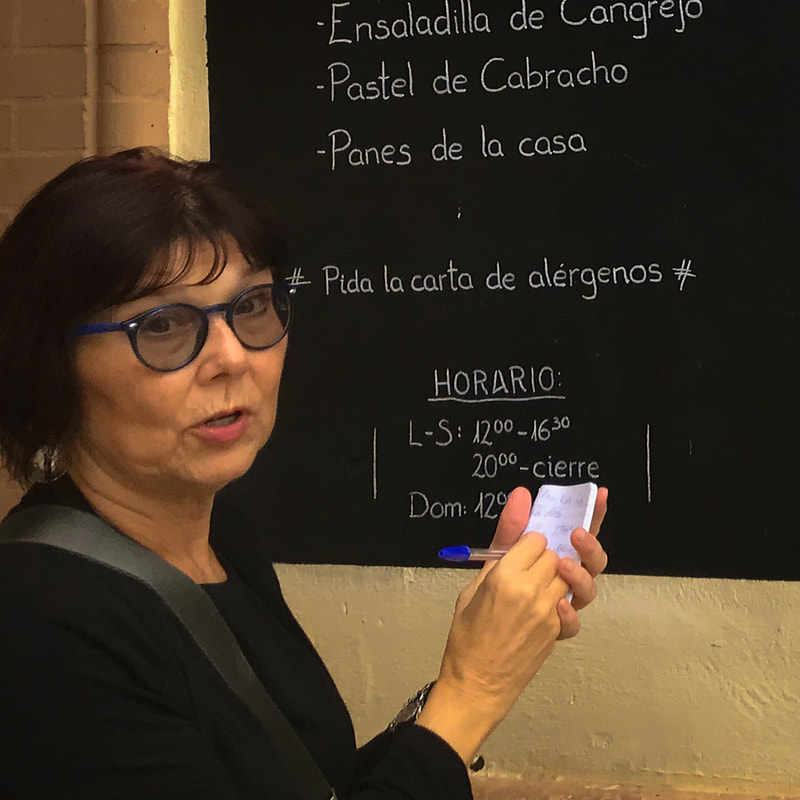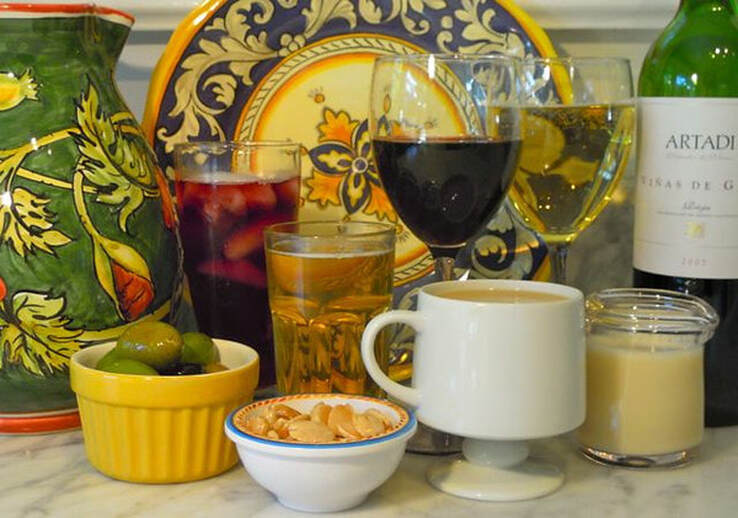|
If I was wrongfully burned as a witch, and then 500 years later someone named a street after me in a fit of remorse, would I feel the scales of justice had finally been balanced? Not even close. As paltry as the apology may be, I give Seville credit for joining other Spanish cities in re-naming public thoroughfares in honor of victims of the Inquisition. Sevillanos will soon be strolling on Isabel de Baena Street, María de Virues Street, and Francisca de Chaves Square, all named for women denounced, tortured, and executed for beliefs defined as unorthodox by Isabella I of Castile. (You may remember her as the queen who, on one of her better days, sent Columbus to the New World). Will the souls of the slain women rest a little easier now? That’s for future theologians to decide. Today, all we know for sure is that the decision is A) an effort to grapple with the abuse of women during one of the darkest chapters of the past and B) an opportunity to jump on a hot marketing trend in the hospitality sector: women’s history. There are half a dozen new tours in town with titles such as “Seville: City of Queens, Nuns, Sex Work & Witches.” They'll introduce you to landmarks of “herstory” and tell tales of famous females who called this city home. My regular readers are familiar with many of them, including Doña Maria Coronel, who tangled so disastrously with Pedro the Cruel in the 14th century; the 19th century nun Saint Angela of the Cross, whose overly life-like remains are on permanent display; and the billionaire Duchess of Alba, whose flamboyant life kept us all agog until her passing in 2014. As the most titled aristocrat in the world, the Duchess had, among her countless other honors, hereditary right to ride a horse into the cathedral. Wisely, she never put this to the test (that I know of). But at the age of 85 she danced barefoot at her third wedding, surrounded by cheering Sevillanos. The Duchess’s home, Palacio de las Dueñas, is now a museum and one of my favorite places to send visitors. It’s magnificent yet so cozy I guarantee you’ll think, “Hey, I could live here!” The house was the brainchild of Catalina de Ribera, a very modern 15th century noblewoman who also built the Casa de Pilatos and the Hospital of the Five Wounds. No, you don’t need to have five wounds to go there, that’s a reference to Christ’s crucifixion, the sort of branding that made marketing sense back in Catalina’s day. The hospital was built to serve low-income residents and later sailors returning from the New World with exotic diseases. It closed in 1972 and the building now houses the Andalucían parliament. Ok, I know what you’re thinking. We’ve had queens, nuns, and witches; what about the sex workers mentioned in the title of that tour? Gosh, where to begin? There’s the 11th century slave girl Itimad, who married Moorish King Al-Mutamid the Poet. And let’s not forget Doña María de Padilla, favorite mistress of Pedro the Cruel. He installed her in the Alcázar palace and built an underground pool where, according to legend, she bathed in milk. Although he was married to a noblewoman, Pedro and his mistress are buried together in the cathedral’s Royal Chapel, something only a king could finagle . Throughout the city you’ll see images of two women holding the cathedral’s Giralda tower, often with pottery and a lion at their feet. These are sisters Justa and Rufina, 3rd century potters who converted to Christianity and ran afoul of the Romans. After Justa was tortured to death, Rufina was thrown to the lions, but they refused to attack, allegedly becoming docile as house cats. She was eventually executed, and both women were canonized. When an earthquake hit in 1755, the sisters were credited with preventing the Giralda from falling; now they’re always shown holding up the tower. I’ll admit some of the details in these stories may be sketchy. But I think we can all agree the city’s history is filled with extraordinary women. Actually, I believe that’s true of all cities, but here they tend to get more recognition. Why? One reason is that in Mediterranean culture, personal relationships are valued above professional success. This makes home the center point of life, enabling women to function as matriarchs. Where some cultures only really value women when they’re young, here middle aged and older women wield the real power in the extended family. These matriarchs are treated with respect at an age when, in many communities, they’d be ignored and marginalized. You can see why I love living here! The role of women in Seville got an additional boost in the 16th century, when some Protestant Reformers hinted that veneration of the Blessed Virgin had become excessive, possibly bordering on idolatry. Spain instantly doubled down, using devotion to Mary as a rallying cry to unify the country that had just come together again after Moorish occupation. Mary’s image appears everywhere — from mosaics in plazas to paintings in bars to the life-sized statues of Semana Santa (Holy Week). One of the most famous of those statues is the Virgin of the Macarena, which has real human hair, wears real undergarments, and supposedly cries real tears. When I asked an agnostic Spanish friend about this, she snorted in derision. “What happened was this. Some drunk went in one night and pitched a bottle of wine at her. The wine ran down her cheeks, creating tracks that looked like tears. And everyone thought it was a miracle.” Be that as it may, the Virgin of the Macarena is one of the most famous among the dozens of Semana Santa Virgins, and you’ll see plenty of real tears on the cheeks of devotees watching her being carried through the streets. And yes, before you ask, it's true Seville gave the world the 1993 dance song “Macarena,” written by local duo Los del Río about a namesake of the Virgin of the Macarena. It instantly became a staple at weddings everywhere — you’ve probably danced to it yourself. In 2002 it was considered the #1 Greatest One-Hit Wonder of All Time. By 2017 it was such a cliché it was #2 on the Most Banned Wedding Songs list (second only to "The Chicken Dance"). Some say the song "Macarena" is just one more piece of its checkered past that the city needs to atone for. One of the true pleasures of spending time in an ancient city is finding the layers of history that infuse every part of the landscape with meaning. If one day you find yourself on Isabel de Baena Street, María de Virues Street, or Francisca de Chaves Square, be sure to pause and feel grateful that the Inquisition is over. It hung on for centuries and was only officially abolished in 1834. Today you are free to believe whatever you wish, including the tall tales told about queens, concubines, aristocrats, witches, saints, and the countless other women who continue to shape the colorful history of Seville. FOR MORE LOONY STORIES ABOUT SEVILLE, CHECK OUT MY AMAZON BEST SELLERS
4 Comments
So I walked into the living room the other day and found Rich staring out the window at a pigeon. The bird — a lone male — was standing on the church roof just opposite, his feathers spread in full mating display, his head tilted to one side directing a come-hither look at my husband. “That is not going to happen,” Rich called out the window. “You two need a moment alone?” I asked. “Nope. We’re done,” he said. The rejected pigeon shook his ruffled feathers back into place and flew off, attempting to look nonchalant. I blame the weather. Temperatures shot up a few degrees and our feathered friends became extremely frisky; at times there’s so much sex and fighting going on out there it’s like watching Game of Thrones. They mostly engage with one another, of course, but as I’ve now learned, there are always a few rebels who want to take a little walk on the wild side. Whoo! Steamy stuff! Although relations between my husband and the pigeon he rebuffed have been a bit strained lately, for the most part Rich is having a grand time pursuing his new hobby of bird watching. As my regular readers will recall, a few weeks ago he hung up a bird feeder in hopes of attracting the little local song birds. So far, no takers. Apparently this is common, and according to the Internet, we can address this by upping our game with a brush pile or hedge to give the birds a sense of protection, a sparkly water fountain to attract notice, and more alluring food presentation. Like what? Candlelight and good china? It doesn’t matter, because none of this is feasible on our narrow urban window ledge. I must say I’m glad I don’t have to work that hard to get my human friends to eat. I’ve had a lot of visitors lately, and thank heavens none of them needs a hedge or water feature to whet their appetite. But it is true that, like the birds, we humans do have certain rituals and routines that define our dining habits, and that goes double in Seville. Here are some ways Sevillanos treat everyday meals with the respect and appreciation they deserve. 1: Order drinks first. Having the warmest climate in continental Europe, Seville assumes you’re always in urgent need of an ice cold beverage. “Para beber?” (To drink?”) is inevitably the first question asked, and you’re expected to be ready with your answer. By far the most common response is “Cerveza” (beer). Not only is a crisp cold brew perfectly suited to the weather, but in a widely quoted study — conducted with Spanish college students — beer was shown to rehydrate better than water. That’s right, it’s science! 2. Don’t order your food until you have your drinks. Here, most servers will rush to get your drinks on the table, then give you time to slake your thirst and review the menu before they return to take your food order. For a major meal such as lunch or dinner, you’ll want to take plenty of time to consider your options and discuss them with everyone else at the table, in case you’ll be doing any sharing. 3. Expect to share food. Eating is a communal act in Spain, and a traditional plato (full portion) is scaled for dividing among many. Even a tapa may be passed around so everyone can sample the flavor. For the past two years, health concerns caused most of us to avoid sharing and order individually, and that’s still perfectly acceptable. Lately the preferred compromise seems to be ordering a few platos to put in the center for sharing plus one individual tapa per person. 4. You own the table until you request the bill. Unlike the US, where your waitress may slap the bill on the table and shoot you a look that says, “Scram, kiddo, your time is up,” in Seville the table is yours until you’re ready to leave. You could nurse a single beverage for hours; I’ve seen it done and the staff always take it in stride. To settle up, you say, “La cuenta,” (the bill) and may reinforce the message by pantomiming the act of writing on your hand as if it were a pad of paper. When the staff is extremely busy, you may have to wait a while, as everyone knows rushing beers to the tables of thirsty newcomers has priority. 5. Tip in the local manner. Sevillanos tip very little, typically leaving behind a few small coins; for a big meal with a group, they might leave a euro per person. This often drives our American friends crazy, and we’ve been accused of being cheapskates and elitists who don’t care about the wellbeing of the workers. On the contrary, I was often a waitress in my checkered youth, and I have deep respect and empathy for all waitstaff. That’s why I’m trying not to upend the existing system, which is more advantageous for them than a tipping economy. Waitstaff here are professionals who are paid a living wage and aren’t dependent on propinas (gratuities). If foreigners drive up tipping standards sufficiently, wages will stagnate as proprietors will no longer feel the need to increase salaries. Eventually, as in the US and elsewhere, the base salary will be woefully inadequate, and the servers’ livelihood will depend on kowtowing to the whims of customers. Sevillano friends have told me this is viewed as demeaning, a reversion to the old class system in which these professionals would be treated as inferiors. “But everybody appreciates getting money!” some Americans insist. Not always. Once, in a funky old bar, Rich attempted to leave a few coins as a propina, and the offended proprietor pushed it back, growling, “This is not that kind of bar.” His pride was worth more to him than a few coins. 6. Accept chupitos gracefully. At the end of a big meal, your table may be served a complimentary round of chupitos (little slurps), shot-glasses of liqueur such as limoncello or vodka carmelo (literally vodka candy, which is much nicer than it sounds). Hipper establishments may serve your chupitos in test tubes, infused in a sorbet, or as dollops of foam. Your host wants to send you out into the street with a smile on your lips and warm thoughts about returning again soon. Spain has the highest number of bars and restaurants in the world, one for every 175 residents, and each host is hoping you’ll drop by often and eat heartily — much like Rich with his bird feeder. So far our carefully displayed song-bird seed hasn’t won us any dinner guests, but there are encouraging signs. Lemondrop, the finch who visited last fall, has fluttered by a few times, and two parrots have taken up residence on a nearby rooftop. Clearly news is spreading by word of beak, and while he waits for hungry song birds to arrive, Rich has plenty of feathered neighbors to keep him entertained. |
This blog is a promotion-free zone.
As my regular readers know, I never get free or discounted goods or services for mentioning anything on this blog (or anywhere else). I only write about things I find interesting and/or useful. I'm an American travel writer living in California and Seville, Spain. I travel the world seeking eccentric people, quirky places, and outrageously delicious food so I can have the fun of writing about them here.
My current project is OUT TO LUNCH IN SAN FRANCISCO. Don't miss out! SIGN UP HERE to be notified when I publish new posts. Planning a trip?
Use the search box below to find out about other places I've written about. Winner of the 2023 Firebird Book Award for Travel
#1 Amazon Bestseller in Tourist Destinations, Travel Tips, Gastronomy Essays, and Senior Travel
BLOG ARCHIVES
July 2024
CATEGORIES
All
|




